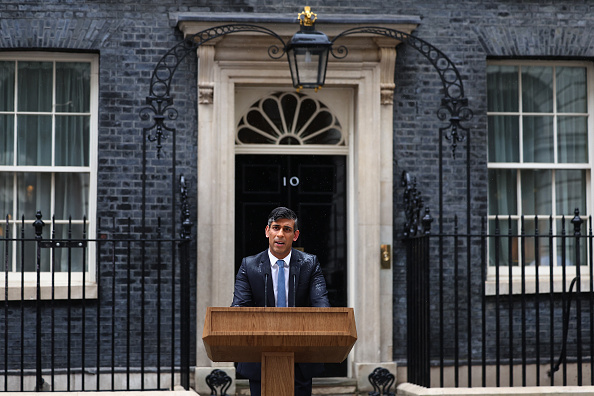More than three quarters (81 per cent) of consumers complain that it is difficult to communicate with businesses, but only 34 per cent of businesses acknowledge room for improvement, according to new research from Twilio. While most businesses focus their efforts on delivering a great product or service, too few businesses recognise the significant impact the communications experience has on their brand and revenue.
The study finds that after a positive communications experience, seven out of ten consumers purchased more products or services from that company; but one-third cancelled their service or switched to a competitor following a negative experience. In the United Kingdom, 42 per cent of customers rate communications from businesses as fair, poor or terrible and UK consumers are the most likely to report that businesses share information that is not relevant or useful to them.
UK customers are also most likely to contact a business to make a complaint, post a negative review, or request a refund than Australian or American consumers.
‘With all the new communications channels available today, we are seeing consumer expectations shift, but the experiences businesses deliver are not keeping pace,’ says Doug Barnes, head of EMEA Business at Twilio.
‘Businesses need to personalise their interactions with customers, improve their responsiveness, and communicate via the right channels to deliver the best customer experience.’
Key findings from Twilio’s report:
- Businesses aren’t aware of how poorly they are communicating with their customers.
- 94 per cent of businesses claim their customers are satisfied with the responsiveness of their communications, yet 96 per cent of consumers disagree.
- When rating their performance on various channels, companies report they communicate most effectively via email and phone. However, when compared to customers’ ratings of these channels, these companies rate their ability to communicate via phone nearly four times higher than customers do and their ability to communicate via email two times higher than customers do.
- Businesses that offer communications through a mobile app, social media, or SMS rate their performance as “excellent” two times more often than customers do.
Companies with a global customer base have to understand the distinct preferences of consumers in each market and ensure their communications strategy and infrastructure can deliver on those preferences.
- 42 per cent of UK customers rate communications from businesses as fair, poor, or terrible. UK customers are the most likely to contact a business to make a complaint, post a negative review, or request a refund.
- Australian customers prefer to communicate with businesses via phone more than other regions. They are also the most likely to contact a business to make a payment or get information about a product or service.
- US customers are most likely to recommend a company to a friend or family member following a positive communications experience. US customers are also more likely than other regions to follow or “like” a company on social media after a positive experience.
Consumers expect communications to be relevant, responsive, and on their preferred channels, but many companies aren’t delivering that experience.
- 79 per cent of consumers say that fast response times make for a positive customer experience, yet 89 per cent report that businesses are too slow to respond.
- 55 per cent of consumers say that communicating with a business via their preferred channel results in a positive experience, yet only 27 per cent of businesses have adopted a fully integrated omnichannel communications strategy which would allow them to communicate this way.
- 41 per cent of Australian companies, 30 per cent of US companies, and 28 per cent of UK companies report that they do not know what channels their customers prefer to communicate on.
The cost of a bad communication experience can be underestimated by or hidden from a business.
- 51 per cent of businesses report that they received negative customer reviews as a result of bad communication experiences their customers have had.
- However, customers are more likely to tell their friends and family (66 per cent of the time) or stop doing business with a company altogether (41 per cent) than write a negative review, actions that may not be as obvious to a company.
- Generation Z consumers (age 18-24) are the most vocal about their experiences. 79 per cent of them will tell a friend or family member after a negative communication experience compared to 67 per cent of GenXers (age 35-44), 68 per cent of millennials (age 25-34), and 61 per cent of baby boomers (age 51-69).
- The younger generations are more likely to take multiple actions after a positive experience — recommending it to a friend, buying more products, writing a positive review, or engaging with the company on social media.
Good communication experiences can have a multiplying effect on the business.
- 67 per cent of consumers will give more of their business to a company as a result of a positive communication experience.
- When a customer is extremely satisfied with a business’s communication, that company is almost 50 per cent less likely to receive a negative review and 47 per cent less likely to have their customers switch to a competitor.
- Companies who deliver positive communications experiences are 45 per cent less likely to report sales decreases and 39 per cent less likely to receive negative press coverage.
- These companies are 2.6 times more likely to have revenue growth of 15 per cent or more.
Digital communication leaders have customers who are extremely satisfied with their communications. Businesses who successfully communicate with their customers share several consistent characteristics.
- Digital communications leaders recognise the value and impact communications has on their customers’ experience and make it a priority in terms of technical resources and budget. When companies make the digital experience a priority, they are 3.8 times more likely to increase budget to ensure that it is a positive experience.
- Leaders are more likely to have a fully integrated, omnichannel experience for their customers. 40 per cent of digital communications leaders have an integrated strategy.
- Leaders recognise the growing preference of their emerging customer base to communicate in new ways. 78 per cent of communications leaders know what channels their customers prefer and 72 per cent offer all of those channels.
- Leaders are more likely to experiment with emerging communications vehicles like messaging apps or video chat in addition to communication through their own mobile app to allow a two-way conversation in real-time.
- Ultimately, digital communications leaders communicate the right information, at the right time, through the right channel to their customers.





